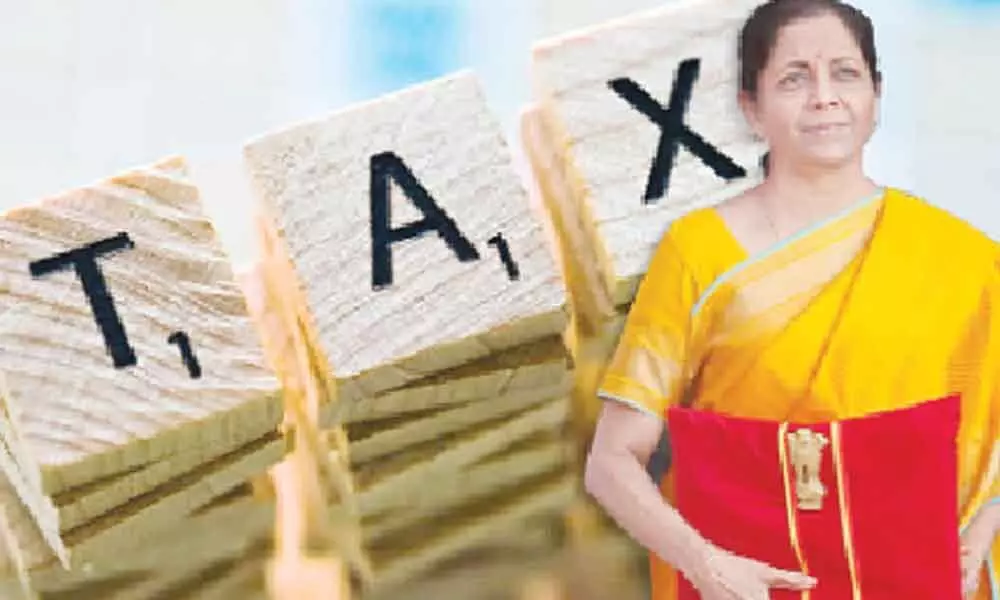Live
- Neeli Megha Shyama Review: A Refreshing Take on Love, Laughter, and Personal Growth.
- HMPV Outbreaks Spark Global Health Concerns: What You Need to Know
- Gautam Gambhir Faces Criticism Over Tactical Errors in Australia Tour
- CM Revanth Reddy Announces Surprise District Tours Starting January 26
- Telangana's TOMCOM Invites Applications for Driver Jobs in Germany
- Calcutta HC rejects plea by rights body for stall allotment at Kolkata Book Fair
- Bengaluru Beer Prices to Rise by Up to 20% Starting January 20
- My Fans Are Like Disciplined Soldiers: Nandamuri Balakrishna
- Adani Group raises Rs 4,850 crore after selling 13.5 pc stake in Adani Wilmar
- "Jogulamba Gadwal Health Officials Assure Public: No Panic Over HMPV Virus".
Just In
Union Budget 2021 adopts a dual approach


Union Budget 2021 adopts a dual approach
Notable emphasis on healthcare, education, and approach to personal income
The Indian economy according to many economists, is going through a demand deficiency problem, where declining disposable incomes and reduction in consumer spending are hurting it. Due to stumbling or stagnant wages, the common man is struggling to cope with the steady price inflation as well as added taxation on various products. this creates a chain reaction where we see a decline in demand in the market, which leads to a reduction in production of goods and services, which in turn, results in massive job loss. we need socioeconomic policies that actually speak to the common man by boosting their disposable income and enabling them to resume consumer spending. With that, it is disappointing to see that the budget reflects two approaches, trickle-down economics which prioritises corporate interests, and welfare state policies like simply handing out subsidies. Although I agree that supplying necessities during crunch times is a must, I believe initiatives like direct cash handouts to the average Indian in order to boost their disposable income (short term) and consumer spending (long term) would truly uplift our economy from its steep decline. This way, we not only provide short term monetary relief to families for their sustenance, but we also get economists to further research into the spending habits of the Average Indian. Such data would enable future Governments to formulate better informed socioeconomic policies that speak to the Common Indian.
An Atmanirbhar Bharat will not come about if we give precedence to wealth creation of the Elite with trickle-down economics and it will not come about if we continue with simple subsidies as a Welfare State. An Atmanirbhar Bharat will only arise when we Indians are healthy, sufficiently educated and socioeconomically well placed to support our great nation. Starting with the healthcare budget… after witnessing private and government healthcare systems crumble in the face of Covid-19, it was important to see a comeback... The 137 per cent increase from the last healthcare budget along with a separate budget for a pan-India vaccine programme is necessary, positive and bold as we need to tackle this pandemic head on. But I find it unfortunate that for another year running, the acknowledgement of the ongoing mental health crisis and budgetary assistance for the specially-abled community are sorely lacking again as majority of their corresponding welfare programmes saw their budgets slashed or unimproved upon. This reflects India's age old systematic and societal negligence towards these areas. This pandemic exacerbated these issues and yet the budget as per my reading, doesn't acknowledge or reflect that.
Regarding education, I passionately believe the only way forward is to boost expenditure as we need to focus on educating our population to transform our nation into a progressive society that harbours the most productive workforce. And yet, on the backdrop of perhaps the biggest jolt to modern education, our government proposed to cut the budget by 6000 crores, one of the largest budget cuts… Does that mean the implementation of the new and ambitious National Education Policy (NEP) is far cheaper than the outgoing education system? I am not sure… But on a positive note, I applaud the government's proposal to establish a central university in Ladakh. I hope established and iconic educationists like Sonam Wangchuk are actively involved as advisors in this development.
Having keenly followed the farm bill legislations and farmers' protests, it's a surprise to see the government's commitment to the APMC by promising to create and invest in 1000 more mandis! This in my humble opinion, sends off a confusing message… But nonetheless, this is a positive step because I believe we need more well-functioning government mandis to cater towards majority of small farmers before we can efficiently rely on a freer market. The Niti Aayog itself noted similar observations in a 2017 report, where they highlighted an improvement in farmer income in the states of Karnataka and Madhya Pradesh where better functioning government mandis were coupled with an influx of private investment and competition.
The author is currently pursuing BA (Hons) in History and International Relations, IILM University, Gurugram

© 2025 Hyderabad Media House Limited/The Hans India. All rights reserved. Powered by hocalwire.com






